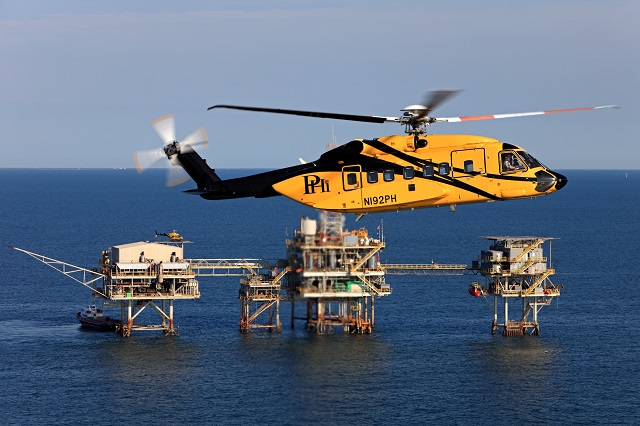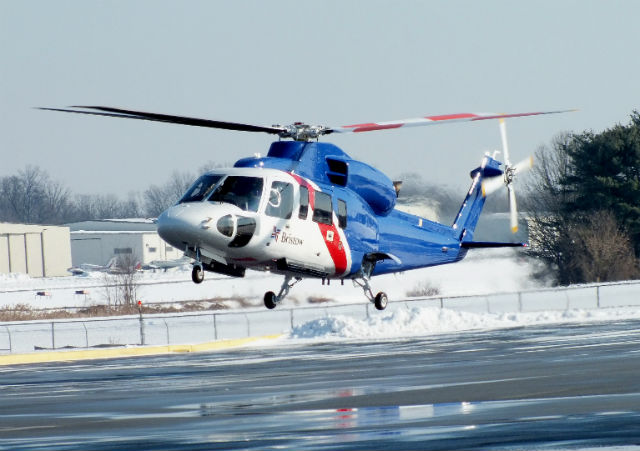With oil prices dipping below $30 per barrel and global energy stocks declining, one sector of the aviation business has industry analysts feeling particularly pessimistic in 2016: civil rotorcraft. In an overcrowded oil and gas transportation market where new American and European helicopters are competing for fewer and fewer orders, Teal Group analyst Richard Aboulafia warns “things could get ugly”.
Speaking at a National Aeronautic Association forum in Washington DC in January, Aboulafia said he expects the civil rotorcraft market to shrink 4.5% in 2016, mostly because of the decline in oil and gas revenues and the slowdown in new explorations: “Big, angry red on civil rotorcraft,” he said.
“It’s not just that you’ve had this tremendous ramp up from super-midsize helicopters such as the [AgustaWestland] AW139, AW189 and H175 from Airbus, and the S-76 and S-92 from Sikorsky; everybody decided to introduce a new product so there’s a whole lot of new stuff coming online.”
It’s in this ultra-competitive market that the world’s largest defence contractor, Lockheed Martin, finds itself, after acquiring Sikorsky from United Technologies last year for $9 billion. While most active in military rotorcraft business, commercial sales still account for 20-30% of Sikorsky’s revenue. Things have got so bad on the commercial market, Lockheed chief financial officer Bruce Tanner expects just $375 million in commercial helicopter sales in 2016.

Sikorsky
Sikorsky commercial systems and services vice president Dana Fiatarone says, despite the bleak sales outlook, his bosses at Lockheed are fully invested in the commercial side of the business and will probably boost Sikorsky’s campaigns, particularly of the S-92 in paramilitary roles.
“[Lockheed’s] got a fairly broad international reach, so some of our civil products like the S-92 are very well situated to perform paramilitary missions, and we think the combination of Sikorsky and Lockheed Martin, and what Lockheed Martin offers from that international perspective, could spur sales of the S-92,” says Fiatarone.
This market includes helicopters for government-funded coastguard and border patrol organisations and general search and rescue, but Fiatarone also sees more S-76D and S-92 sales opportunities developing in the VIP transportation and emergency medical service markets. “We’ll focus on those areas while the oil and gas segment is slow,” he says.
Fiatarone says Lockheed executives are looking to grow Sikorsky beyond its big economic drivers on the military side, such as the VH-92A presidential helicopter, HH-60W Combat Rescue Helicopter and CH-53K King Stallion. In fact, they have been discussing potential next-generation market offerings on the civil and military side.
Asked if there are any new aircraft types being considered, Fiatarone said he has been looking at potential upgrades and “potentially a new model further down the road”.
“I wouldn’t want to commit to three years or 10 years, but certainly it’s a conversation we’re engaged in within the company,” he says. “It’s something that Lockheed Martin wants to know about.
“It’s an area that they have a lot of focus and energy toward, so they can understand how we compete effectively in the marketplace – what that next-generation product looks like, what the new product upgrades look like. It’s certainly an area we spend a lot of time and energy on.”
The S-76D has come under increased pressure from new European rivals in the mid-size market segment, and there’s no sign of that threat abating. Fiatarone says despite the “stiff competition”, the S-76D remains “relevant and strong” in the civil marketplace. He confirms the company is also investing heavily in new autonomy products, like the “rig approach” system for the S-92 and potentially the S-76D, that reduce pilot workloads and increase mission effectiveness.

Sikorsky
Fiatarone says to survive the oil and gas downturn Sikorsky must continually re-examine its cost structure and manufacturing output and adjust appropriately to be fully prepared when the eventual market rebound comes.
“The company has seen this cycle before,” he says. “If you’ve been in the industry for more than a decade, you’ve seen at least one oil and gas boom and bust. We’re preparing to take full advantage of the market rebound when that happens.”
Sikorsky has three strategic priorities in 2016: to become “laser-focused” on customer service and support and capture as many flight hours as possible, to expand sales in other market segments and to optimise the business to take full advantage of any market rebound.
Fiatarone says if there’s a mission to be performed, he wants the aftermarket sales and support to be such that an operator will chose to fly a Sikorsky aircraft over alternatives. An example might be the UK’s privatised search-and-rescue contract, held by Bristow Helicopters. Bristow will eventually employ 11 S-92s and 11 AW139s in the role, and Sikorsky will be hoping its type flies the majority of those missions.
“We know there will be pressure on new aircraft sales and orders in 2016, given the size of the oil and gas market,” says Fiatarone. “In the meantime, when there’s a mission to fly, we want a Sikorsky aircraft to go fly that mission. We’ll be laser-focused on customer service and support to make sure they’re flying a Sikorsky aircraft whenever they have a mission to fly.”
Source: FlightGlobal.com



















